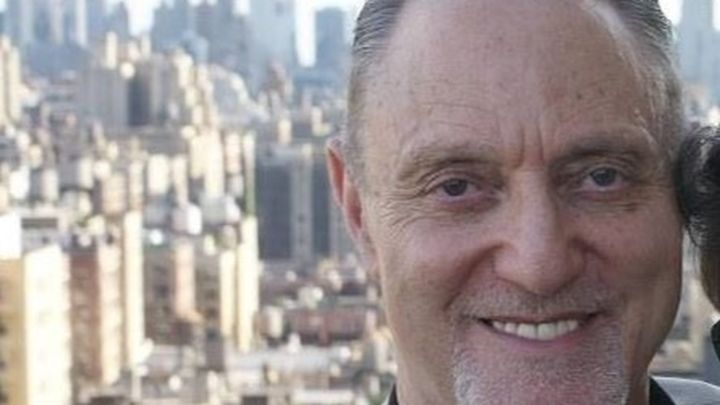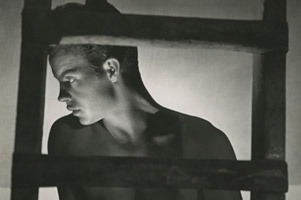
Lining Up for Lynes Part Two
Donation protected
Over a year ago, I launched “Lining Up for George Platt Lynes,” my GoFundMe campaign to raise funds so I could forego at least a semester’s worth of part-time teaching at Rutgers University. I was determined to spend summer and fall 1918 completing the manuscript of my biography of George Platt Lynes, the unique 20th Century photographer whose extraordinary portraits—of great writers like Gertrude Stein and André Gide, of visual artists like Edward Hopper and Joan Miro, of performing artists like soprano Lily Pons and bass Ezio Pinza, and of classical dancers like Alicia Markova and Erik Bruhn—provide fascinating documentation of transatlantic cultural exchange that flourished in the decades between the two world wars.
 Gertrude Stein in Bilignin, France, by GPL 1931
Gertrude Stein in Bilignin, France, by GPL 1931
Primarily earning his living as a fashion photographer, publishing in Vogue, Harper’s Bazaar, and Town and Country, Lynes’s private obsession, however, was his photography of the male nude—images barely known until social mores had changed sufficiently that by the late 1970’s such photographs could be exhibited widely and published in books without launching charges of obscenity.

This world “that not many … can imagine” probably accounted for the great length of that initial first draft. For Lynes’s life and the characters who populated it comprise a vast canvas of the famous, the not-so-famous, old and young, beautiful and plain, intellectual and vulgar, European and American, black and white, gay and straight and everything in between, and the sophisticated and the innocent. It was a world of bohemian habits and upper-class privileges, a world of creativity and driving ambition, a world that pushed through the Depression and the Second World War to establish New York as a world capital of art and commerce and fashion and new artistic trends. And while my manuscript was always intended as a biography of a single artist, the important relationships and overlapping social and professional networks in which George Platt Lynes played his part required that attention be paid to the many influences surrounding him. There were many colorful anecdotes that were ripe for the telling, but I am now in the difficult position of paring down the first draft to a more manageable scale.


 Gertrude Stein in Bilignin, France, by GPL 1931
Gertrude Stein in Bilignin, France, by GPL 1931Primarily earning his living as a fashion photographer, publishing in Vogue, Harper’s Bazaar, and Town and Country, Lynes’s private obsession, however, was his photography of the male nude—images barely known until social mores had changed sufficiently that by the late 1970’s such photographs could be exhibited widely and published in books without launching charges of obscenity.

Colette by GPL (detail) 1936
My manuscript was completed last December and received a positive peer review sent to my publisher, Oxford University Press, from a scholar in the field: “…this fine manuscript … was a great pleasure to read, even though very long. I think you will ultimately have a good success with it. The author is a fine and responsible scholar and has done his work so far as sourcing and working with primary and secondary documentation. And he is good at reconstructing the life-events of the [subject] and in doing so creating a world that not many people can imagine."
My manuscript was completed last December and received a positive peer review sent to my publisher, Oxford University Press, from a scholar in the field: “…this fine manuscript … was a great pleasure to read, even though very long. I think you will ultimately have a good success with it. The author is a fine and responsible scholar and has done his work so far as sourcing and working with primary and secondary documentation. And he is good at reconstructing the life-events of the [subject] and in doing so creating a world that not many people can imagine."
This world “that not many … can imagine” probably accounted for the great length of that initial first draft. For Lynes’s life and the characters who populated it comprise a vast canvas of the famous, the not-so-famous, old and young, beautiful and plain, intellectual and vulgar, European and American, black and white, gay and straight and everything in between, and the sophisticated and the innocent. It was a world of bohemian habits and upper-class privileges, a world of creativity and driving ambition, a world that pushed through the Depression and the Second World War to establish New York as a world capital of art and commerce and fashion and new artistic trends. And while my manuscript was always intended as a biography of a single artist, the important relationships and overlapping social and professional networks in which George Platt Lynes played his part required that attention be paid to the many influences surrounding him. There were many colorful anecdotes that were ripe for the telling, but I am now in the difficult position of paring down the first draft to a more manageable scale.

Christopher Isherwood by GPL c. 1946
I think writers will appreciate how it is possible that I am too close to the manuscript to be able to make editorial decisions about cutting it down by a significant amount, which is the task now imposed on me. I will need to work with an outside editorial consultant, and so I inaugurate a new campaign to bring the text to publishable length. I will also need to hire a professional to help me work on the book’s “back and front matter”—the index, bibliography, acknowledgements, captions, and credits. (Those unfamiliar with publishing protocols may not be aware that authors bear the brunt of illustration costs and permission fees. So, there will also be charges related to high-resolution scans for illustrative materials.) All this, to bring the manuscript nearer production-ready shape. Also, such scholarly elements as the index and bibliography, the responsibility of the author, are often best farmed out to those with considerable experience in formulating these required academic elements.
So, I begin this second campaign: Lining Up for Lynes Part Two, to bring the manuscript to a near approximation to its publishable state—though to be sure, once Oxford’s editors review the material, I will need to respond to their various inquiries and instructions. But as I anticipate teaching again this fall, it would be a great relief if the significant textual editing required to get to those final steps is well under way. The rest should be manageable even while teaching part-time. Blanchard Kennedy by GPL (detail) 1936
Blanchard Kennedy by GPL (detail) 1936
My goal this time is a more modest $5,000, and as I launch this second campaign, I do so with appreciation for the many contributors who helped me last go-round meet a $10,000 goal in something like two months. If you have already donated but can manage a bit more, have no fear I will be making comparisons. Every gift moves me toward my goal. If you are new to the campaign and wish to help, give at a level comfortable to your purse. My only enticement is to assure those who can manage a gift at the level of $250 or more that they will receive a signed copy of the book and will have their names acknowledged in it. Yet if you wish to give quietly, be assured that GoFundMe allows for me to know your name without your name otherwise listed as a donor on my GoFundMe site.
Finally, a teaser: an illustrated article I have written for the website of the Poetry Foundation, reviewing Lynes’s early attempts to become a writer, then shows how he moved into photography and made stirring portraits of writers he admired, will be published sometime in the coming months; I hope no later than the fall. The article will serve as a kind of “trailer” for the book, and you will be among the very first to know when it is available online. I hope the article will assure you that I have not been sitting home idly!
I think writers will appreciate how it is possible that I am too close to the manuscript to be able to make editorial decisions about cutting it down by a significant amount, which is the task now imposed on me. I will need to work with an outside editorial consultant, and so I inaugurate a new campaign to bring the text to publishable length. I will also need to hire a professional to help me work on the book’s “back and front matter”—the index, bibliography, acknowledgements, captions, and credits. (Those unfamiliar with publishing protocols may not be aware that authors bear the brunt of illustration costs and permission fees. So, there will also be charges related to high-resolution scans for illustrative materials.) All this, to bring the manuscript nearer production-ready shape. Also, such scholarly elements as the index and bibliography, the responsibility of the author, are often best farmed out to those with considerable experience in formulating these required academic elements.
So, I begin this second campaign: Lining Up for Lynes Part Two, to bring the manuscript to a near approximation to its publishable state—though to be sure, once Oxford’s editors review the material, I will need to respond to their various inquiries and instructions. But as I anticipate teaching again this fall, it would be a great relief if the significant textual editing required to get to those final steps is well under way. The rest should be manageable even while teaching part-time.
 Blanchard Kennedy by GPL (detail) 1936
Blanchard Kennedy by GPL (detail) 1936My goal this time is a more modest $5,000, and as I launch this second campaign, I do so with appreciation for the many contributors who helped me last go-round meet a $10,000 goal in something like two months. If you have already donated but can manage a bit more, have no fear I will be making comparisons. Every gift moves me toward my goal. If you are new to the campaign and wish to help, give at a level comfortable to your purse. My only enticement is to assure those who can manage a gift at the level of $250 or more that they will receive a signed copy of the book and will have their names acknowledged in it. Yet if you wish to give quietly, be assured that GoFundMe allows for me to know your name without your name otherwise listed as a donor on my GoFundMe site.
Finally, a teaser: an illustrated article I have written for the website of the Poetry Foundation, reviewing Lynes’s early attempts to become a writer, then shows how he moved into photography and made stirring portraits of writers he admired, will be published sometime in the coming months; I hope no later than the fall. The article will serve as a kind of “trailer” for the book, and you will be among the very first to know when it is available online. I hope the article will assure you that I have not been sitting home idly!

Tanaquil Le Clercq and Nichollas Magallanes in "Jones Beach" (detail) 1948
So, give what you can, and I will be eternally grateful to know that reviving the name and reputation of “George Platt Lynes” is a task many people share in.
Let’s get started!
Allen Ellenzweig
For more photographs and commentary on George Platt Lynes, his life and career, go to The George Platt Lynes Biography Project on Facebook:
https://www.facebook.com/TheGeorgePlattLynesBiographyProject/
So, give what you can, and I will be eternally grateful to know that reviving the name and reputation of “George Platt Lynes” is a task many people share in.
Let’s get started!
Allen Ellenzweig
For more photographs and commentary on George Platt Lynes, his life and career, go to The George Platt Lynes Biography Project on Facebook:
https://www.facebook.com/TheGeorgePlattLynesBiographyProject/
Organizer
Allen Ellenzweig
Organizer
New York, NY